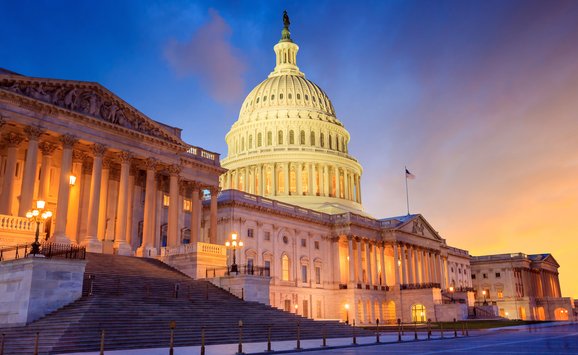Although the likely breakup of the U.S. electricity industry is heralded as an economic boon to business and consumers alike, the downside to more competition is debatable, especially since the uncertainties involved are many. Whether the air we breathe improves or worsens will depend on choices consumers, producers, and policymakers have yet to make. Economic analysis of alternative regulatory options offers insights into what could happen.

For a number of reasons, including advances in technology favoring smaller-sized power plants, the natural monopoly status of electricity generation is coming to an end in the United States. In the next ten years, most analysts anticipate, the generation component of the industry will open up to competition. As a result, different approaches to regulation of transmission and distribution will also have to be found.
The move away from tightly regulated electricity generation promises efficiencies that will benefit consumers, whose energy prices should be lower and whose array of options should expand to include, for example, time-of-day pricing and interruptible service.
Yet other considerations besides efficiency enter into the thinking of policymakers when deciding what form a restructured and more competitive industry should take. One of these considerations is the need for environmental protection. From the standpoint of society as a whole, the benefits of increased market competition could be a bad bargain unless air quality is maintained at current or improved levels.
The electricity industry is and will continue to be subject to numerous federal and state laws, regulations, and initiatives to reduce air pollution and its consequences. What isn't clear yet is whether current environmental policies are likely to be more or less effective when the generation segment of the industry is opened to competition. Nor is it clear how many existing laws and policy initiatives will have to be revamped or replaced. The environmental effects of restructuring ultimately will depend on choices that producers, customers, and especially policymakers have yet to make. As they weigh options, an economic analysis of alternative regulatory approaches—and the likely effects on consumption and investment—offers some insights into what could happen.
Cleaner Air vs. Dirtier
Power plants now produce more than a third of the country's annual nitrogen dioxide (NO2) and greenhouse gas emissions and about three-quarters of its sulfur dioxide (SO2) emissions. These emissions also include the soot, dust, and aerosols that, together with secondary forms of NO2 and SO2 emissions, make up particulate matter.
Some analysts have suggested that restructuring the industry could possibly reduce air pollutants and their effects by hastening new investments and growth in construction and use of new plants that run on cleaner fuel (natural gas). However, if, as expected, restructuring reduces the price of electricity, an upswing in use is likely. Whether an upswing in use is accompanied by an upswing in emissions depends on the vintage of plants and type of fuel used to meet the increased demand.
Because new, cleaner plants are not expected to dominate the industry for some time, there is concern about increased use of existing facilities. Such concern is raised most often by states in the Northeast, who fear that more open access to electricity transmission will increase coal-fired generation in the Midwest. These downwind states fear the added use of coal will cause them to experience higher concentrations of ozone and particulate matter (and more acidic deposition), making it more difficult for them to maintain current ambient air quality levels.
However, the Federal Energy Regulatory Commission takes a different view. FERC's recent analysis of its own open transmission access regulation predicts only trivial increases in NO2 emissions, implying small changes in ozone concentrations and particulates in the northeastern states. Several limitations of this analysis argue for caution in its interpretation, however. For instance, FERC's analysis does not account for changes in prices once access to transmission is more open, nor the effects changes in prices will have on consumer demand, operation of the electricity system, or new investment in generation and transmission.
Impact on Current Environmental Policies
Whether or not competition in electricity generation markets increases or reduces air pollution, it certainly will affect the many policies that regulators have devised to deal with power plant emissions thus far. Since the passage of the Clean Air Act in 1970, a wide range of federal regulations has been implemented, with a growing reliance on incentive-based methods to force accountability for environmental damage. Competition could give some of these programs the boost they need to succeed in even more significant ways. One example is EPA's SO2 Emission Allowance Trading Program, under which coal-fired electric power plants receive annual allowances for SO2 emissions, which they can transfer to other plants within their own systems, sell to other utilities, or save for later use to meet the annual emissions cap.
Current incentives to trade allowances are not as strong as they could be, since the states often create disincentives for using utility compliance plans that rely on trading. For instance, in every important coal-producing state, regulators reward the use of in-state coal over other "strategies" that may cost less. The incentive to use trading should become stronger in a deregulated market where generators are penalized by the market for incurring unnecessary costs.
On the other hand, industry restructuring will likely weaken policies that state regulators have adopted to factor environmental damage into the cost of doing business, encourage consumers to conserve energy, and promote renewable energy sources. What is broadly described as "social costing" could become one of the casualties.
Social costing
In use by seven states and under consideration by several others, this type of policy requires utilities to estimate the environmental damage that could result from alternative generating technologies and, for each option evaluated, to incorporate the results into the estimated private cost of producing electricity. The power plants that the utilities invest in (or contract with) must be chosen based in part on the results of this exercise.
Broader access to electricity transmission could undermine state efforts to encourage generators to reflect social costs in investment or operating decisions. And if competition were to extend to the consumer level, social costing as it is now practiced would become virtually unworkable. Electricity suppliers would be able to bypass social costing regulations by operating as independent generators and by marketing power directly to large customers or to power aggregators, who would then contract directly with electricity consumers.
In the short run, the demise of social costing would be of little consequence. The emission rates of new facilities are relatively low, so social costing programs have had minor impact on investment decisions for new plants. Over time, however, social costing programs could take into account a broader range of factors in estimating the environmental damage of producing electricity. Many analysts, including researchers at RFF, envision extending social costing beyond investment considerations to encompass the operation of existing facilities, which often have emission rates several times higher than new plants do.
What analysts hope is that, if social costing were to become more comprehensive, utilities could make business decisions that would lead to dramatic environmental gains at relatively low costs. For instance, suppliers could switch from one generating technology to another, depending on the effect of prevailing atmospheric conditions. (They could use older, dirtier plants when breezy conditions would disperse emissions, and clean but expensive new plants when temperature inversions would create stagnant air.) Regulators will have opportunities to incorporate a broadened application of social costing into the workings of the new institutions arising to regulate transmission and distribution.
Alternatively, imposing a tax on emissions throughout the economy could make the cost of environmental damage part of the cost of doing business. Some experts consider this approach superior because no distortions would arise between the prices of electricity and other forms of energy.
Conservation programs
Despite skepticism about the overall effectiveness of so-called "demand side management" (DSM) programs for consumers (such as free energy audits and subsidies to purchase energy-efficient heating and air conditioning systems), many states insist they be maintained as restructuring moves forward.
Yet how such conservation programs can be funded in a restructured industry is open to question. States may find it unfair to continue to impose the costs of such programs on incumbent utilities in a competitive environment. To do so may make such utilities less competitive because of the offsetting prices they have to charge for transmission or distribution.
One way around this difficulty might be to enhance the ability of electricity suppliers to base their prices on time-of-demand and power load conditions, thus limiting the need for conservation programs. Another way is for states to charge a fee for DSM programs, which all generators (or their customers) that connect to the transmission or local distribution grids have to pay. Such a fee would prevent customers from taking their business elsewhere solely to avoid paying for such programs.
Renewables
Little doubt exists that renewable energy sources like hydroelectric power, wind, and solar, geothermal, and combustible resources will suffer in an environment where the cost of generating electricity is expected to fall. If it does fall, firms that use renewables to produce power may not be able to cover their (generally higher) costs. Moreover, the costs and operating characteristics of renewables often do not compare favorably with those of fossil-fired facilities.
Nevertheless, through proper pricing of electricity transmission, the advantages of using renewables may still be recognized in a restructured industry. For example, industrial and commercial users could take advantage of wind and solar generation, which often are available at times that coincide with periods of peak electricity demand.
Whether concern about pollutants from fossil fuels will stimulate policies to increase the use of renewables is likely to depend on concern about global warming (renewables emit few, if any, greenhouse gases). Since any related national policies will take time to shape, expanding and increasing the renewable electricity production investment tax credits authorized in the 1992 Energy Policy Act may be an appropriate interim way to sustain development of renewable technologies.
Putting Change in Perspective
Within the larger context of the country's regulatory structure, changes in the electricity industry may have more limited implications for the environment than might be inferred from this article, which merely throws the possible consequences into rough relief. Cities will still have to meet air quality standards, power plants will still be subject to an SO2 emissions cap, and other policy initiatives for preserving or improving air quality in national parks and rural areas will continue.
As with many issues associated with restructuring, whether society will be the worse off if demand side management programs and social costing activities diminish or take on new forms remains a subject for further study. In any case, current state efforts to tilt electric utility investment decisions in favor of the environment have not been widespread or particularly forceful. If law and public policy do have to be reconfigured, the quality of the environment may actually benefit as a result of the industry's new structure.

Alan J. Krupnick is a senior fellow and Dallas Burtraw and Karen L. Palmer are fellows in RFF's Quality of the Environment Division.
A version of this article appeared in print in the May 1996 issue of Resources magazine.







